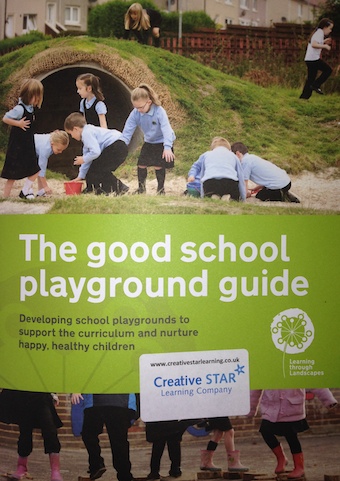
Developing your school grounds or outdoor space is one of the most satisfying ways of increasing the amount of learning and play happening outdoors. To kickstart the process, it is a good idea to seek professional advice and do some reading on the subject. This blog post is all about the books which can help you do this. I have not included national outdoor publications, as these can all be found in this blog post.
Learning through Landscapes published a beautifully visual free document, The Good School Playground Guide. It is worth downloading and reading. The advice dovetails nicely with several key Scottish education documents. In particular, the Play Strategy for Scotland which has the following specific outcome for schools:
“All children and young people enjoy high quality play opportunities, particularly outdoor free play in stimulating spaces with access to nature on a daily basis in school, nursery and early learning and childcare.”
The next free download is This Place is Like a Building Site. It focuses specifically on loose parts play and has some good suggestions for resourcing your loose parts. This should be read in conjunction with Loose Parts Play: A Toolkit.
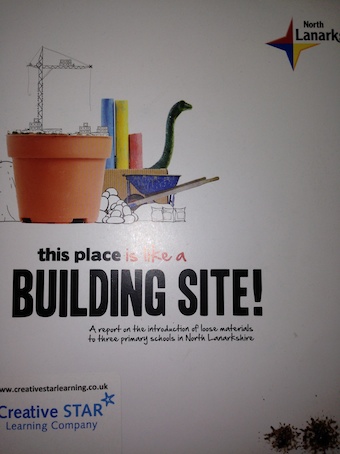
Next, download Special People, Special Places: The Hidden Curriculum of the School Grounds. It is essential reading about why school grounds matter to children and how they are cared for reflects how children perceive their worth. It is also available in paper copy occasionally on Amazon. The Kate Greenaway Nursery blog post gives a flavour of the value of this book.
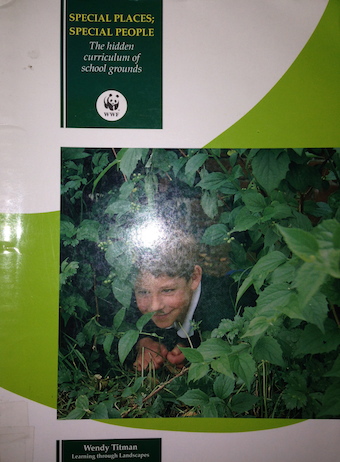
I have two books that schools repeatedly borrow and hang onto – and I have to prise them back. This is because the photos are amazing. Both are specifically about ways of naturalising your grounds and have very positive, uplifting environmental messages. They are suitable for all schools including secondary schools and colleges.
The first is Asphalt to Ecosystems by Sharon Gamson Danks. I’ve had the privilege of being able to interview her for this blog, so have a look here for more information about the book.
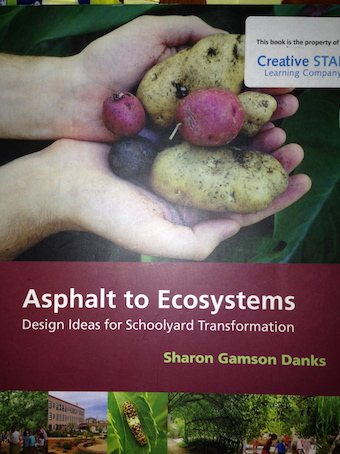
The other one, is Rusty Keeler’s Natural Playscapes. Not only is there reams of advice and beautiful photos, there are wonderful illustrations drawing by Rusty to explain key points and ideas. This blog post – What Rusty Said is helpful to explain the thinking behind the book.

In 2016, Pru Walsh republished and updated her amazing classic early years publication, Early Childhood Playgrounds which is definitely a “must-buy” for any infant school or nursery who wish to develop their school grounds. Unlike many other books, there is some very sensible, specific advice which is relevant in the UK as well as Australia where Prue is based.

How to Grow a Playspace – 2017. Elizabeth Cummins and Katherine Masiulanis are two Australian landscape architects who edited this global perspective on designs for play. It literally covers the world! This is more for those who are studying or researching play environments. However it’s a fantastic compendium.
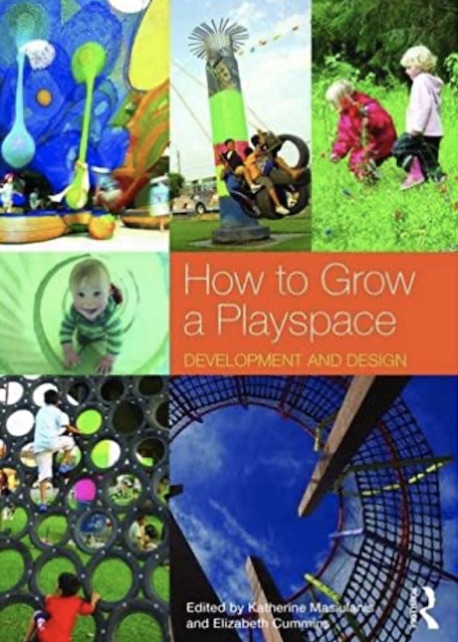
Place, Pedagogy and Play was published in 2020 and is a compilation from Matubla Khan, Simon Bell and Jenny Wood with a range of guest writers. It is aimed more at landscape architects than educators but worth a look for those studying the design of play spaces for children. Examples are worldwide.
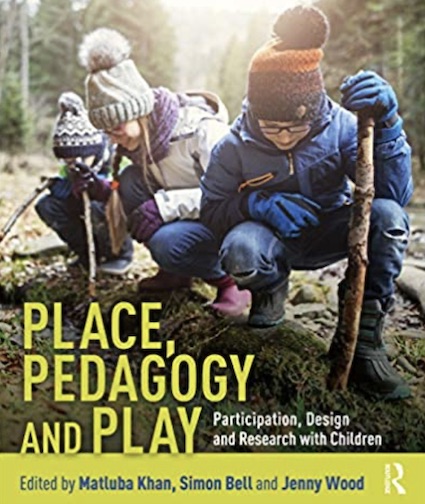
Learning through Landscapes produced Learn and Play Out in 2014. This is aimed specifically at primary schools and is specifically about kickstarting the process of developing an outdoor space. It pulls together a lot of the charity’s school grounds work and saves time downloading lots of different sheets from their website.
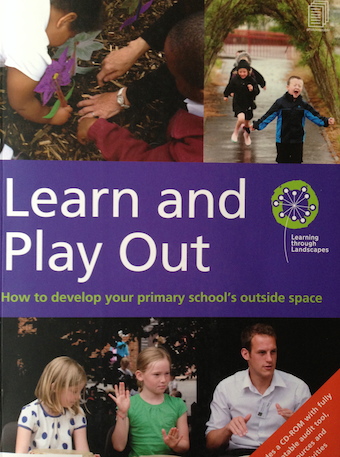
A similar book is also available for the Early Years. Gail Ryder Richardson used to work for Learning through Landscapes and wrote Creating a Space to Grow on the back of a successful project in Kent.
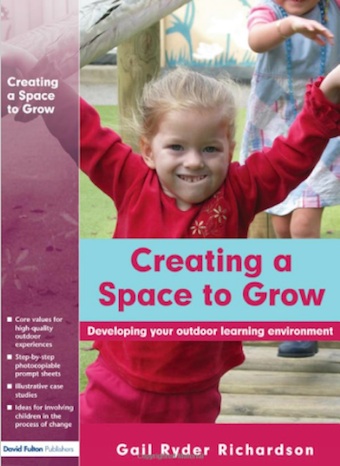
One unsung hero of a book for pre-school practitioners is Sue Elliot’s The Outdoor Playspace Naturally for Children Birth to Five Years. It provides thought-provoking chapters and helpful advice. Sadly it is very difficult to get hold of a copy in the UK and it is expensive. But worth every penny. Ask your Australian or North American friends nicely to find you a copy.
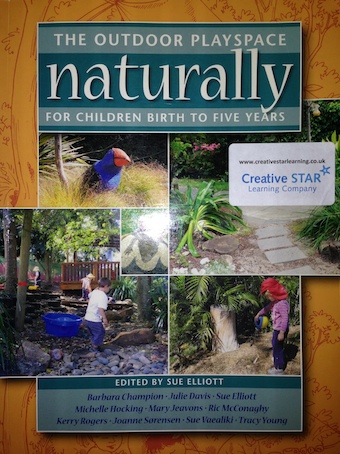
Finally, no school grounds list is complete without Natural Learning by Robin Moore and Herb Wong. Although this book was published in 1997, for school grounds enthusiasts, it is a worthwhile read, not least it really is the forerunner of much current thinking on natural playscapes and the need for children to experience natural environments.
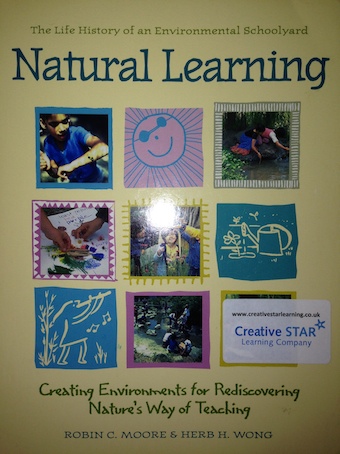
Outdoor Classrooms is another brilliant book from Australia. It is based upon the permaculture principles and has beautiful illustrations along with lots of friendly practical advice.
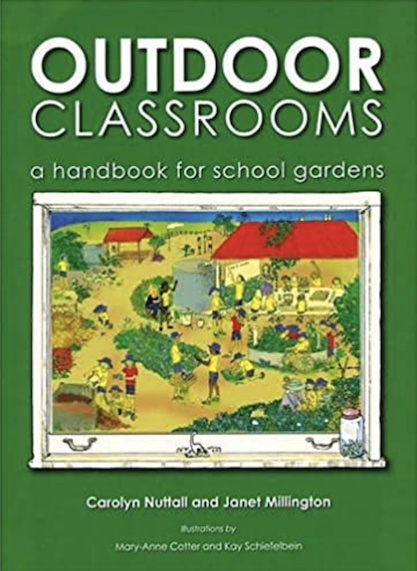
There may be other good books out there – please tell me if you feel I’ve missed any important ones off the list. I’m not focusing on gardening books or outdoor learning activities but about books that are looking at the holistic development of a school ground or outdoor space.
This post was first published in February 2017.




















Fabulous compilation!
You may want to consider Landscape and Child Development to add to the list.
Debby
http://www.evergreen.ca/docs/res/Landscape-Child-Development.pdf
Thank you Debby – It’s great that you have added a Canadian contribution to this collection. Much appreciated.
Hi Juliet
Great to know that Prue’s book is out. Can I add my own book to your excellent list?? Playing and Learning Outdoors: making provision for high quality experiences in the outdoor environment with children 3-7.
One more for the list is Robin Moore’s national guidelines for the USA, ‘Nature Play and Learning Places: creating and managing places where children engage with nature’ published in 2014 (National Wildlife Federation & Natural Learning Initiative).
Hi Jan
Belated thanks for all that you have suggested. My apologies for not including your own book – I think I class this more as a book about improving provision rather than specific outdoor space physical changes. So I really should put this book list up too! 🙂